|
BULB LOG 19 -- 8th May 2006
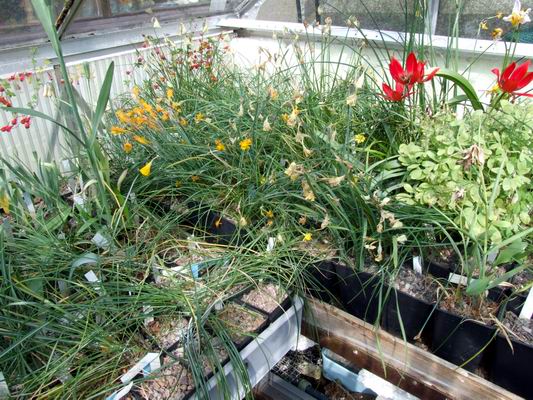
Gothenburg annex
I hope you have been enjoying the pictures from Gothenburg on the forum pages which reminds me to remind you that as this season progresses fast it is time to feed the bulbs with potash. I am feeding many for the second time and for some this is the last opportunity to apply food before their leaves start to turn yellow indicating that they are going dormant. Never be tempted to feed or over water bulbs with yellowing leaves thinking that you will keep them going for a wee bit longer because once the leaves turn the plant is already in an irreversible retreat to dormancy and excessive moisture can only do harm - allow them to dry out slowly by keeping the sand plunge moist. However those bulbs that are still in flower or have green leaves can get that extra bit of potash to encourage them to produce good flowering buds for next season's flowers.
It is another of those weeks when I have so much to show you I could fill pages if only I had the time, on Sunday I took over 300 pictures as I try to build my digital photo-library up to the size of my slide library. I can't remember if I said in a previous log that I have long passed the point where I would have spent the money my new camera cost me on slide film if I was still using that old medium which means that it has already earned its cost and all pictures are now for free so to speak.
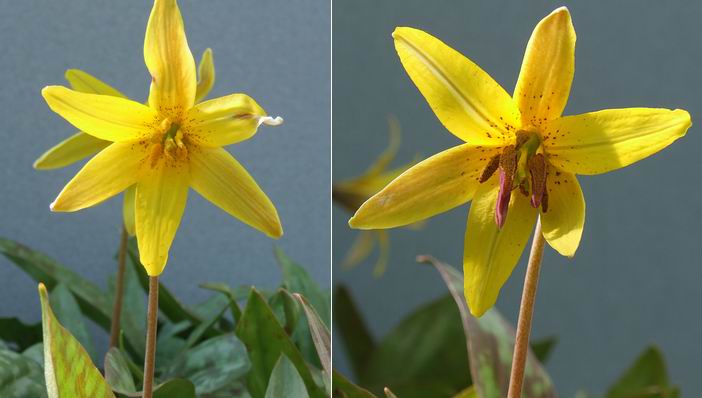
Erythronium americanum flowers
I struggle to distinguish the different taxa mentioned for the Eastern North American yellow erythroniums from the cultivated material that I have seen or grown so I will list them all as Erythronium americanum. Two different forms show that the anther colour can vary in colour and I have forms that are golden yellow and dark brown.
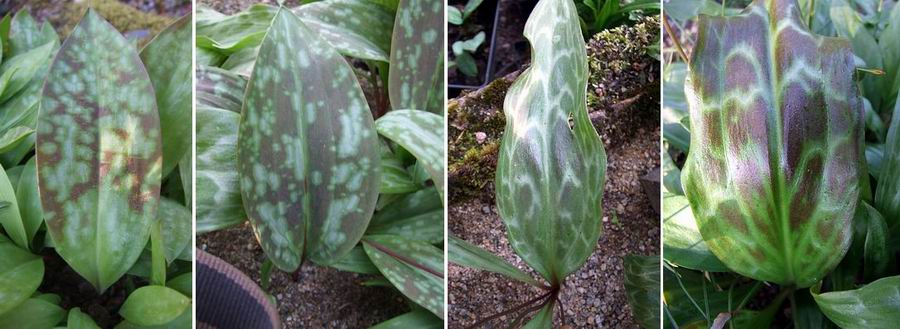
Erythronium leaves
Whatever they are called, all of the Eastern North American erythroniums are more closely related to the Eurasian E. dens-canis complex than they are to the Western American species. The easiest way to tell them apart is by the pattern on the leaves - above from the left I show E. americanum, dens-canis, multiscapoideum and revolutum. Notice how in the two on the left, the patterns are random while in the two on the right, the pattern follows but does not cross over the veins of the leaves. I should mention that in young leaves the pattern may not be visible as it is not until the third year from seed that the patterns start to appear. Also you may notice that the leaves of E. americanum and dens canis taper into the stem much more abruptly than the likes of revolutum. Another similarity between the Eurasians and the Easterns is that, as far as I can say, they only ever have a single flower per stem where the Westerns can have several.
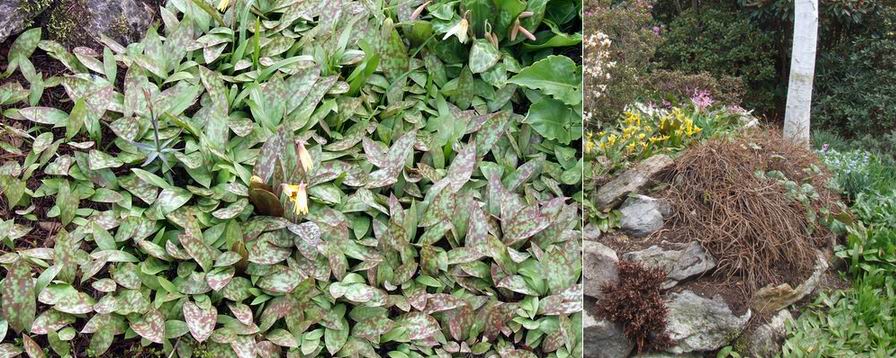
Erythronium americanum leaves
Now you should all be able to instantly recognise these Erythronium americanum leaves - this is the prolific non-flowering form. It increases rapidly by stolons forming hundreds of immature bulbs which are only capable of producing a single leaf. An Erythronium bulb has to be big enough to produce two leaves before it is able to flower - notice the two flowering bulbs in the centre of this patch. This patch of leaves has travelled from the main planting of on a raised bed one meter above - in the picture (right) these leaves are on the lower right hand corner and the main group can be seen in flower on the higher bed so the stolons have pushed all the way down to the lower level.
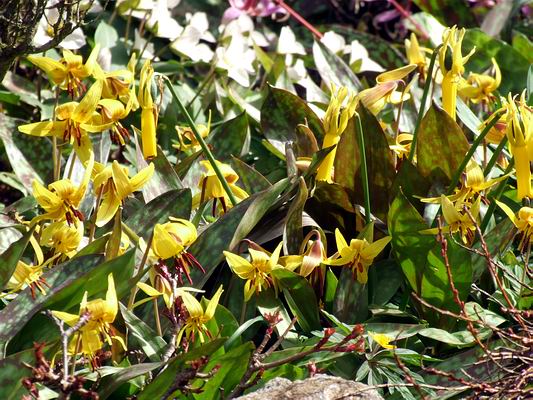
Erythronium americanum prolific
Of course the prolific "non-flowering" form has, for the last three or four years, been flowering reasonably well. I have no answer as to why it should have suddenly started to flower: I have done nothing, so could it be climatic changes? I was interested to find out that they have had the same experience with it at Gothenburg and I have heard a couple of other gardens have also shared this experience in recent years. We may never know what it is that makes it flower or not but I am grateful that it is now flowering for us.
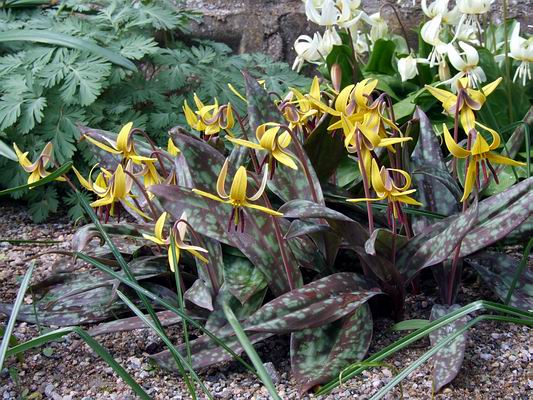
Erythronium americanum 'Craigton Flower'
Erythronium americanum 'Craigton Flower' flowers well every single year and is one of our best forms.
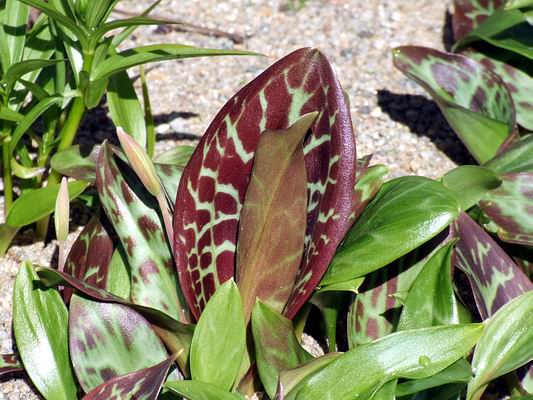
Erythronium oregonum leaf
Sometimes the leaves are so attractive, like this Erythronium oregonum leaf, that you could grow them for the foliage alone. This just happens to be one of our best flowered forms as well, the only negative is that it has never increased by division so we are trying to raise a seed strain to see if we can get more of this outstanding quality.
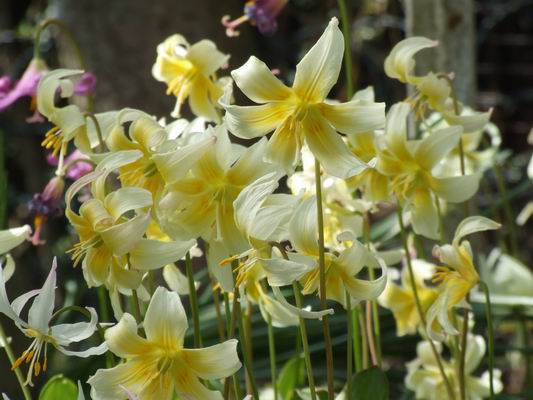
Erythronium 'Craigton Cream'
Another of our own hybrids is Erythronium 'Craigton Cream' which is an open pollinated E. helenae cross - this is an excellent plant that increases freely by division.
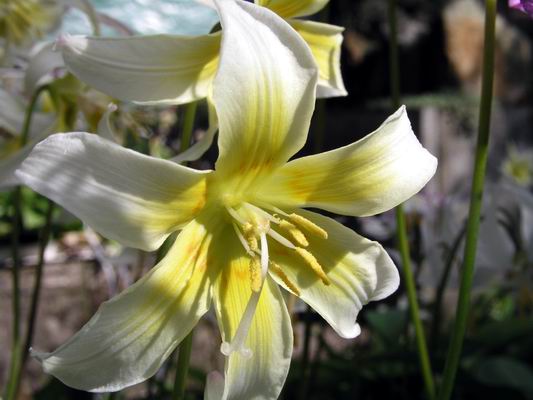
Erythronium 'Craigton Cream' detail
You can see that the style is bent downwards, a characteristic that it takes from the seed parent.
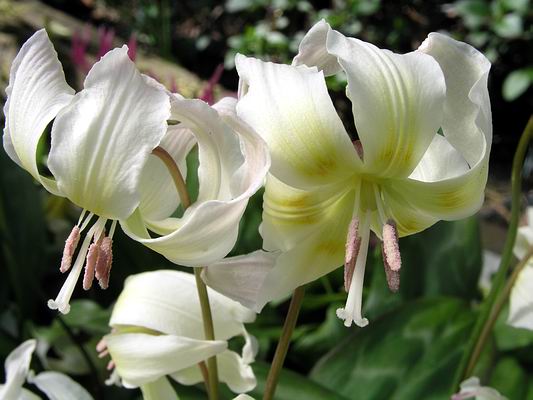
Erythronium pink anthers
The bees are much more successful at making crosses than I am, few of my attempts at hybridising have succeeded while we are always finding hybrids in our open pollinated seedlings. This form of E. californicum has almost certainly crossed out to something to give the lovely pink anthers, but I will never know for sure without a DNA study.
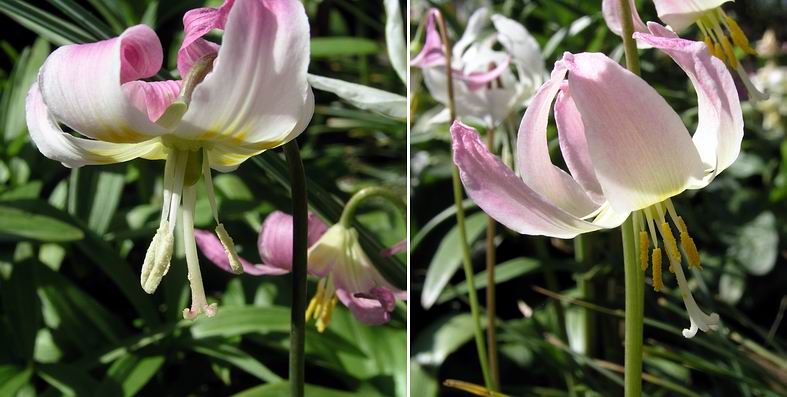
Erythronium hybrids
Two more this time from E. revolutum seed showing that a possible cross with E. californicum.
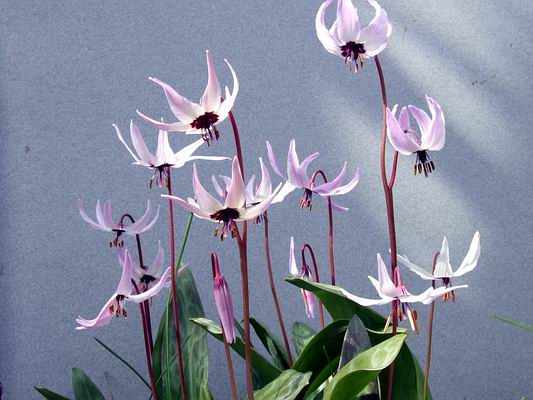
Erythromium hendersonii
Hybrids are fine but you cannot improve on the species such as Erythronium hendersonii which is always sought after with its irresistible colour combinations.
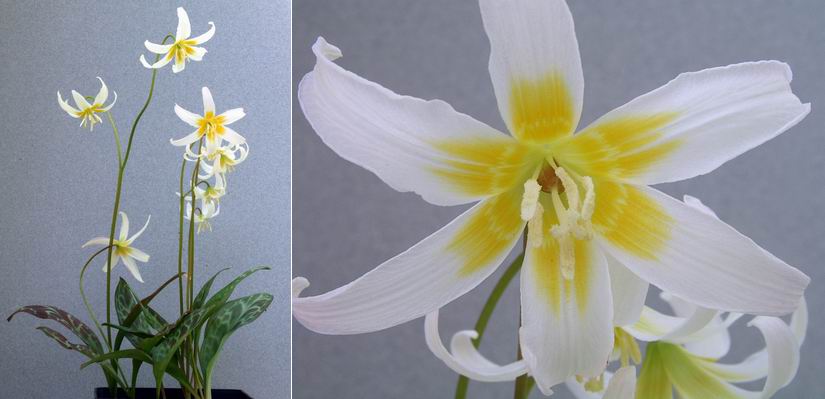
Erythronium citrinum
There are several closely related species that are basically white with a yellow centre, like Erythronium citrinum. They can be separated by diagnostic features such as the filaments, the style and the shape, presence or absence of saccate appendages at the base of the petals but horticulturaly they are very similar.
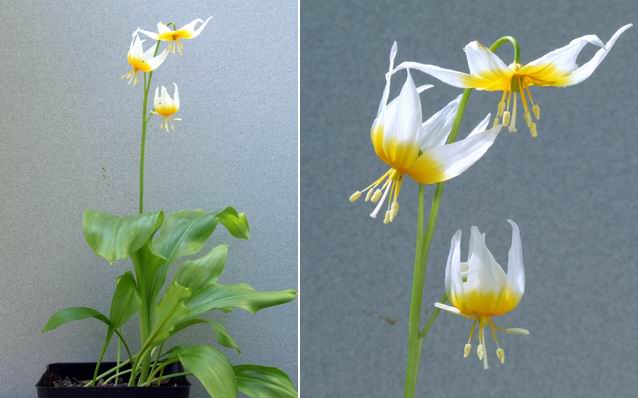
Erythronium taylorii
I showed Erythronium taylorii last year when it flowered for the first time for us now I can show it again with three flowers per stem, I am sure that as it matures it will have perhaps as many as five flowers like the closely related E. tuolumnense.
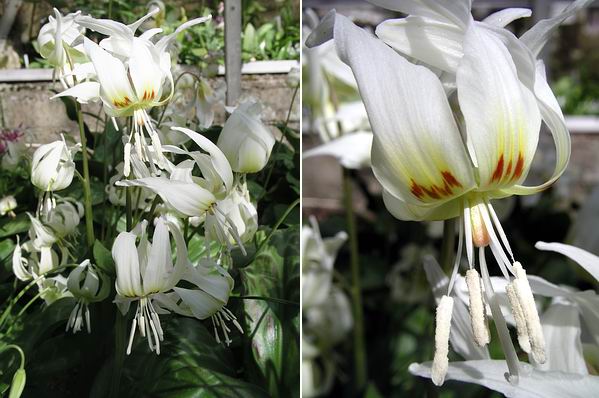
Erythronium californicum
The beauty of Erythronium californicum with its pure white anthers is always welcome in the garden especially when some forms of it increase very freely and soon form large free flowering clumps - other forms refuse to split and remain as a single flowing bulb.
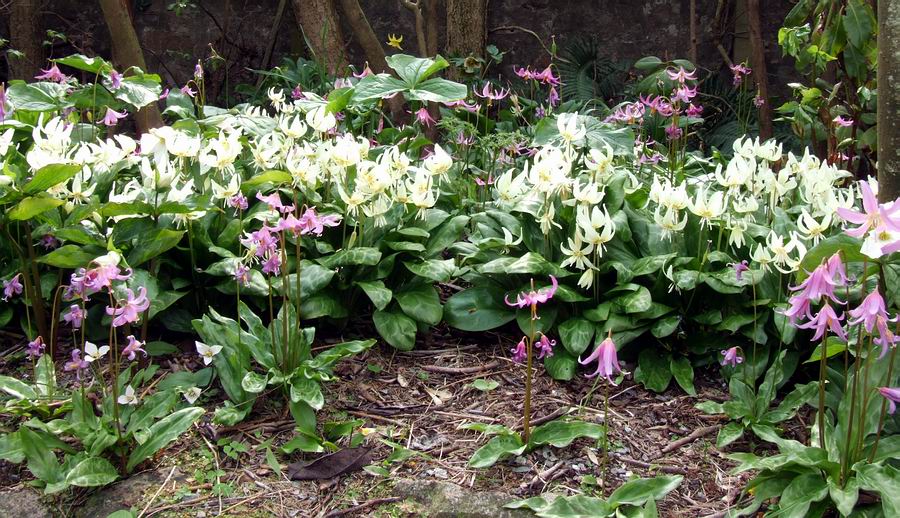
Erythronium 'White Beauty'
I always recommend Erythronium 'White Beauty' as the first to get in your garden, it is always available, relatively cheap and makes a lovely show especially if it is mixed with some pink E. revolutums. What a pity that we do not yet have a form of revolutum that increases as well as 'White Beauty' but I am working on it.
^ back to the top ^
|

